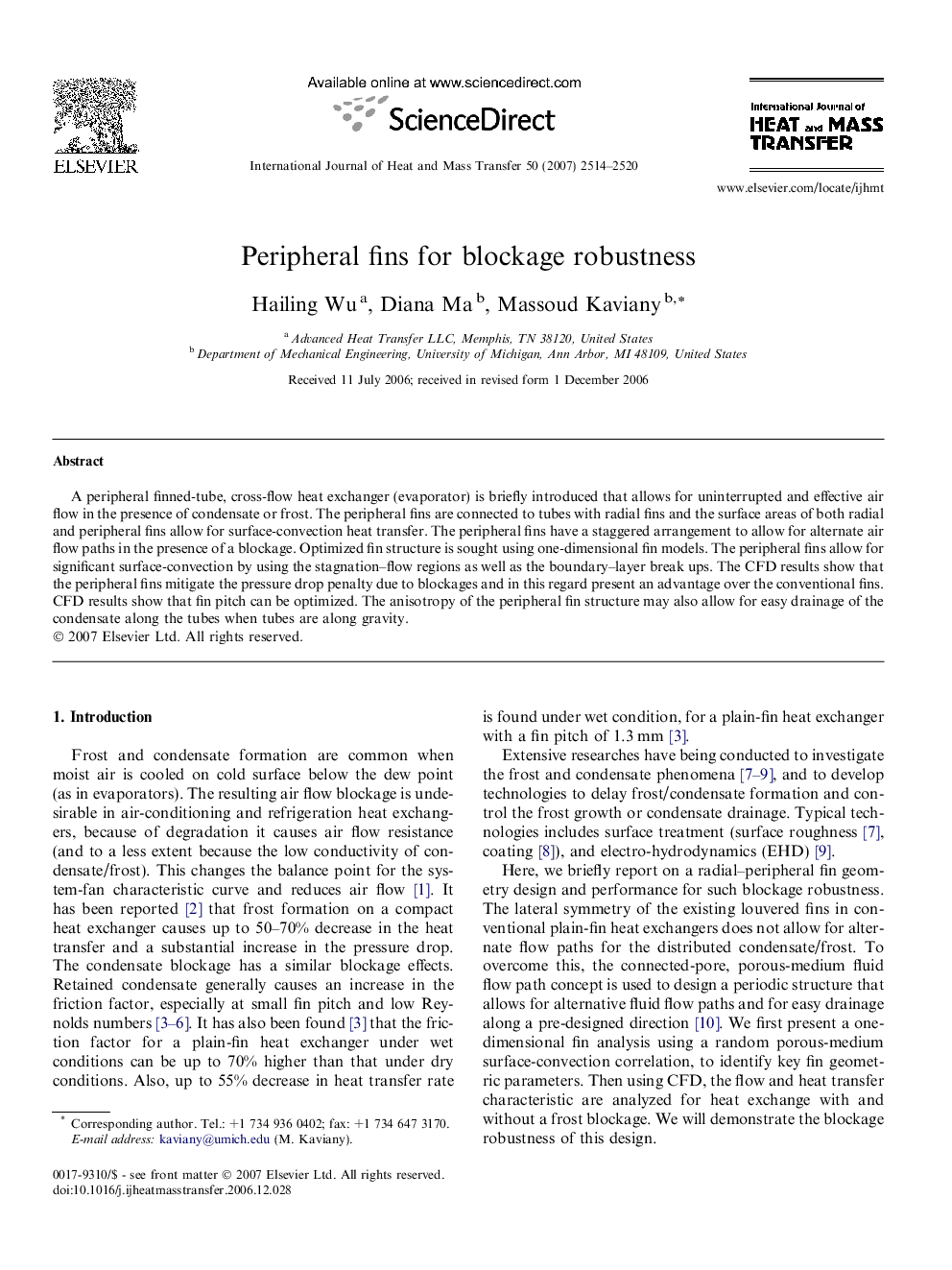| Article ID | Journal | Published Year | Pages | File Type |
|---|---|---|---|---|
| 661487 | International Journal of Heat and Mass Transfer | 2007 | 7 Pages |
A peripheral finned-tube, cross-flow heat exchanger (evaporator) is briefly introduced that allows for uninterrupted and effective air flow in the presence of condensate or frost. The peripheral fins are connected to tubes with radial fins and the surface areas of both radial and peripheral fins allow for surface-convection heat transfer. The peripheral fins have a staggered arrangement to allow for alternate air flow paths in the presence of a blockage. Optimized fin structure is sought using one-dimensional fin models. The peripheral fins allow for significant surface-convection by using the stagnation–flow regions as well as the boundary–layer break ups. The CFD results show that the peripheral fins mitigate the pressure drop penalty due to blockages and in this regard present an advantage over the conventional fins. CFD results show that fin pitch can be optimized. The anisotropy of the peripheral fin structure may also allow for easy drainage of the condensate along the tubes when tubes are along gravity.
